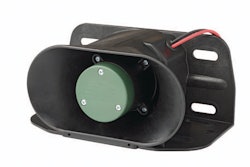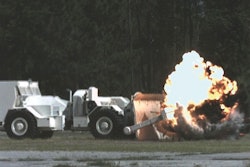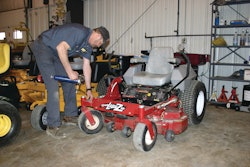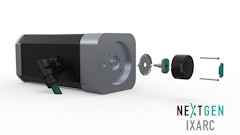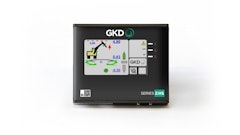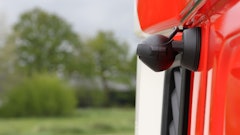Once considered optional equipment, back-up alarms have become a necessity on moving industrial equipment. You'll find them on emergency and maintenance vehicles, construction and earthmoving equipment, buses, trucks, forklifts and utility vehicles, to name a few.
Bob Stella, engineer for Superior Signals Inc. (SSI) recalls, "Low-level alarms for construction equipment were introduced as the direct result of increasing workplace accidents. Eventually, back-up alarms were mandated by the Occupational Safety and Health Administration (OSHA) on all construction vehicles, and then migrated to all types of industrial vehicles. Even some automakers now offer optional interior and exterior back-up alarms."
"Non-electronic back-up alarms were used as far back as the 1940s in the military," Lisa Ball, senior marketing specialist at Preco Electronics Inc., points out. "In the 1960s electronic back-up alarms began to enter the marketplace. Our company was a pioneer of back-up alarm development which was later mandated by OSHA in 1971."
Standards set
Not only has the need for back-up alarms grown, but also the Society of Automotive Engineers (SAE) and OSHA have mandated the type of signal and sound level. The standard has become the audible horn or beep at a sound level of 87 to 112 dB at 4 feet. These acoustical devices produce an audible noise with a dominant frequency.
SSI has been designing and manufacturing Safe-T-Alert alarms since 1997. "Some manufacturers have tried voice alarms," Stella says, "but the standard has become the horn or beep. There are also alarms that have a capacity to automatically adjust their sound level to the ambient noise level in the workplace."
"Back-up alarms are electronically connected to the reverse signal of the vehicle," Ball explains. "They're activated each time the vehicle engages into reverse gear, and the sound is made by moving a diaphragm at a rate somewhere between 700 Hz and 2,800 Hz. That's when you get the typical 'beep-beep-beep' sound."
Kyong Pak, an electrical engineer at SSI, adds, "When the unit is energized, an electronic circuit generates beep tone signals and drives a speaker or horn to produce the distinct sound of an universally recognizable backup alarm."
Most back-up alarm providers will work with OEMs to develop and manufacture custom alarms for specific applications. Ball notes, "Some alarms may need to operate at specific levels, or at times allow disabling for certain applications, so companies like Preco collaborate with OEMs to fit alarms to the equipment and application needs. A good supplier will also design OEM-specific electronics for the alarms and provide custom harness and connection options."
What's new?
Off-the-shelf back-up alarms have evolved into systems, sometimes because of customer requests, production team input, or urban noise restrictions, sometimes for increased performance.
An example of a system is the Preco Safety Alert System (SAS), which combines the back-up alarm with an object detection system. "Working together, the back-up alarm maintains a sound output of 5 dB above the ambient noise level until the PreView system detects an object in its field of view," Ball explains. "Then, the SAS alarm switches to a high sound output for maximum alert. This feature keeps the back-up alarm noise level down until required."
Alarms come with new performance abilities. For example, the Preco 6000 Series offers a tighter tolerance for sound output, a +/– 2 decibel tolerance vs. +/– 4 decibels specified by SAE.
"New housing designs improve alarms' efficiency," Pak says. "Circuit board enhancements, too, can improve reliability while lowering costs. Our latest model, the 3200 Series, is a good example of electronic advancements."
Ball agrees, "Some new back-up alarms utilize a microprocessor controller to increase reliability as well as a tighter tolerance for sound output."
One interesting feature on new back-up alarms uses self-resonant circuitry to adjust the output of the mechanical speaker as the alarm ages. "In our 200 Series alarms, this ability makes sure that the alarm remains at its resonant circuitry, giving the equipment the same specified decibel output even after a few years of operation," Ball concludes.




